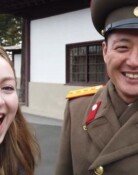Air Force to conduct 1st aerial refueling drill with US
Air Force to conduct 1st aerial refueling drill with US
Posted September. 20, 2011 08:36,
The Air Force said Monday that it will conduct its first aerial refueling drill over its skies in cooperation with the U.S. Air Force through Sept. 30.
Military insiders and outsiders say South Korea should use the drill as a watershed for its Air Force to secure related capacities in preparation for emergencies.
Japans Air Self-defense Force, which had conducted its first midair refueling drill eight years ago, deployed four tankers last year in securing independent capacities for aerial refueling.
○ Doubling operational scope, flying time of fighter jets
The drill will entail daytime and nighttime aerial refueling for 16 pilots of South Koreas flagship F-15K and KF-16 fighter jets in the Yellow Sea from KC-135 tankers, which will launch from Kadena Airbase in Japan. One KC-135 tanker can carry 120,000 liters of jet fuel and just two to three minutes are needed to fill up the tanker of a jet fighter using Boom, the fueling hose.
If South Korean pilots finish refueling in-flight with accompanying American pilots, who will board their planes as drill instructors, they will earn a six-month license for aerial refueling. If they want the license to last beyond six months, additional drills will be needed every six months.
Several South Korean pilots went to the U.S. for aerial refueling drills when Seoul introduced the F-15K, but this is the first time for aerial refueling to take place over South Korean skies.
If the South Korean Air Force receives assistance from U.S. Air Force tankers, it will more than double the operational scope and flight time of South Korean fighter jets. Aerial refueling will enable a single fighter to more than double its combat capability.
With refueling, the planes can be armed with additional guided ballistic missiles instead of loading heavyweight fuel, which will enable the South Korean Air Force to wage powerful counterattacks in the event of enemy aggression.
Aerial refueling also enables the South Korean Air Force to refuel without stopping at a halfway point and directly participate in a large-scale joint military drill overseas.
A South Korean Air Force source said, To maintain our pilots qualification for aerial refueling, we will conduct aerial refueling drills over Korean skies every six months and expand the number of pilots to undergo the drill.
○ Huge gap in refueling capacities between S. Korea and Japan
As shown in this drill, the South Korean Air Force is completely dependent on the U.S. Air Force in carrying out an aerial refueling mission since the former has no tankers. The South Korean Air Force operates as many as 60 F-15Ks, the strongest fighter jet in Northeast Asia, and is taking steps to introduce stealth fighters. If independent aerial refueling capacities is lacking, however, Seoul will remain a paper tiger.
In 2003, Japans air force conducted its first aerial refueling drill in skies over its mainland and decided to introduce tankers, citing North Koreas military threat as the main cause. From 2008, Japan introduced four KC-767J tankers from Boeing of the U.S.
As a result, pilots of Japans air defense force have secured the capacity to conduct a mission around the clock with a longer flight range without worry over refueling. Apart from Japan, 29 countries including Israel, Singapore and the Netherlands are operating tankers.
In contrast, South Koreas bid to introduce tankers has remained stalled for the 17th year. In line with the Mid-term Defense Plan, Seoul`s military has sought to introduce tankers since 1994, but the project has been delayed due to other priorities.
Under the National Defense Reform 2020 set during the Roh Moo-hyun administration, South Korea had a plan to introduce tankers by 2015, but this was delayed by the incumbent Lee Myung-bak administration.
A ranking military official said, For South Korea to maximize its Air Force capacities to arm itself and strike in the early days after the outbreak of a war, it must advance the timing of introducing tankers.
ysh1005@donga.com







